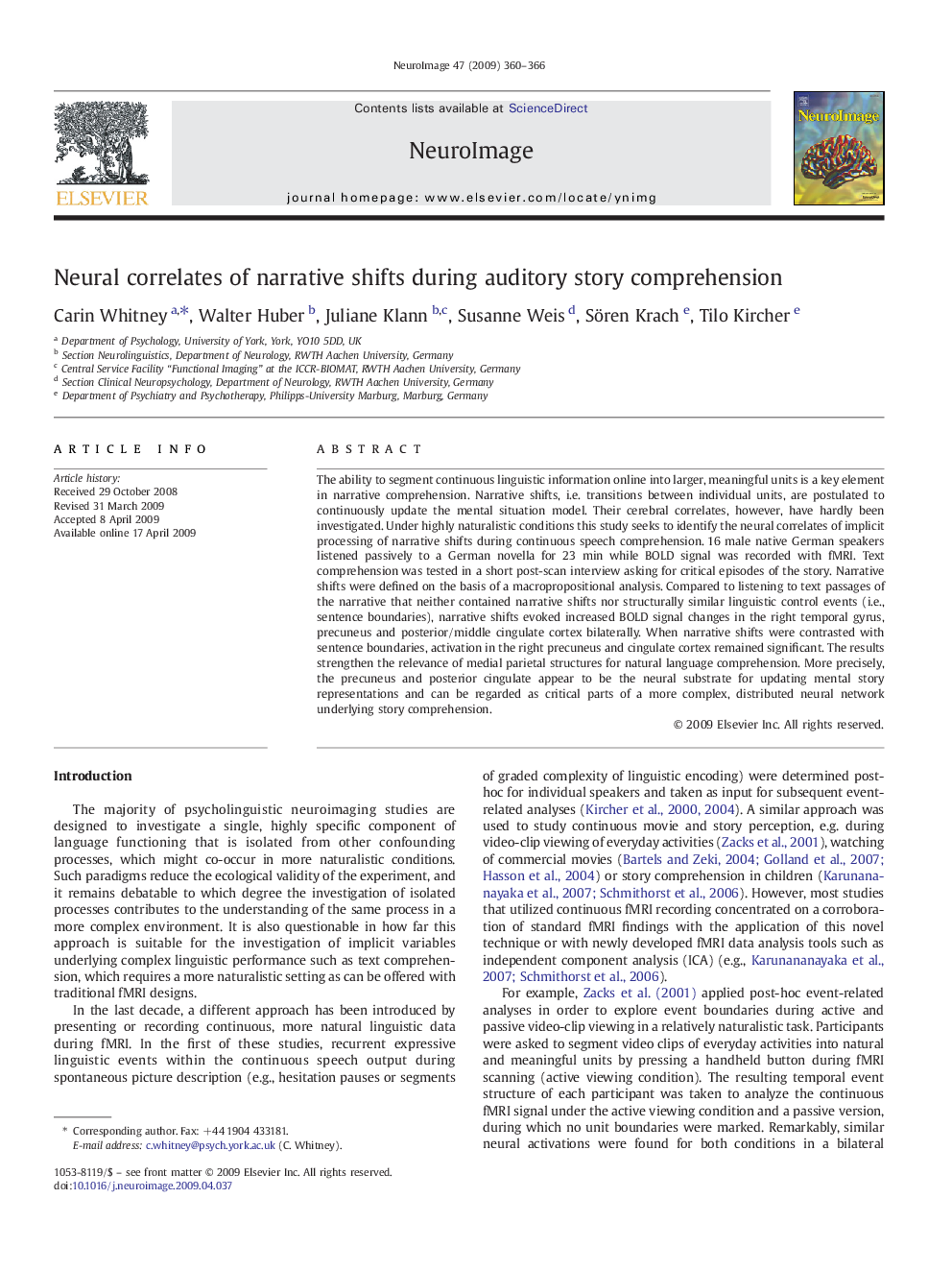| Article ID | Journal | Published Year | Pages | File Type |
|---|---|---|---|---|
| 6036880 | NeuroImage | 2009 | 7 Pages |
Abstract
The ability to segment continuous linguistic information online into larger, meaningful units is a key element in narrative comprehension. Narrative shifts, i.e. transitions between individual units, are postulated to continuously update the mental situation model. Their cerebral correlates, however, have hardly been investigated. Under highly naturalistic conditions this study seeks to identify the neural correlates of implicit processing of narrative shifts during continuous speech comprehension. 16 male native German speakers listened passively to a German novella for 23Â min while BOLD signal was recorded with fMRI. Text comprehension was tested in a short post-scan interview asking for critical episodes of the story. Narrative shifts were defined on the basis of a macropropositional analysis. Compared to listening to text passages of the narrative that neither contained narrative shifts nor structurally similar linguistic control events (i.e., sentence boundaries), narrative shifts evoked increased BOLD signal changes in the right temporal gyrus, precuneus and posterior/middle cingulate cortex bilaterally. When narrative shifts were contrasted with sentence boundaries, activation in the right precuneus and cingulate cortex remained significant. The results strengthen the relevance of medial parietal structures for natural language comprehension. More precisely, the precuneus and posterior cingulate appear to be the neural substrate for updating mental story representations and can be regarded as critical parts of a more complex, distributed neural network underlying story comprehension.
Related Topics
Life Sciences
Neuroscience
Cognitive Neuroscience
Authors
Carin Whitney, Walter Huber, Juliane Klann, Susanne Weis, Sören Krach, Tilo Kircher,
